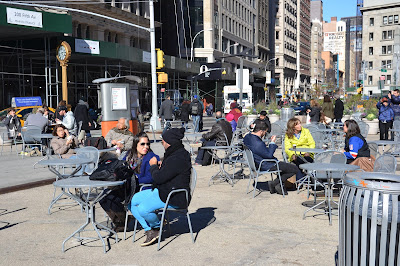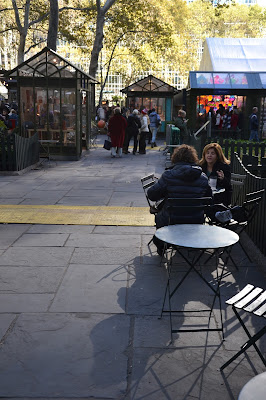Is Council's policy of non-notification leading to future budget blow-outs at best, or future bus commuter health and safety hazards at worst...?
There's been a couple of recent hearings relating to the Precinct Properties and Auckland Council PPP in downtown Auckland (The one with the new tower, proposed partial Queen Elizabeth Square sale, CRL enabling works, and shifting a bus terminal from Lower Queen Street to Lower Albert Street). The first was a hearing of objections to Auckland Transport's proposal to "stop" the road status of the part of the Queen Elizabeth Square proposed for sale, and the second was Precinct Properties private plan change 79 to change the zoning of the part of the Queen Elizabeth Square proposed for sale from public open space to zoning more conducive to private development. The latter hearing was covered by Bob Dey
here,
here and
here.
One of the issues many submitters raised at the hearing related to laneway width proposals worked out and modelled by Precinct Properties working with Auckland Transport. I posted about this issue
here. This demonstrates that using Fruin's formulae (Fruin is the
acknowledged expert) and his approach to modelling commuter pedestrian flows in corridors, that to safely move an average of 10,000 people per hour, the corridor needs to be between 8.3 and 8.9 metres wide, when the corridor is lined with shops.
This is Precinct's architectural rendering of the proposed east west laneway - a narrow 6 metres wide and connecting Lower Queen Street with Lower Albert Street. The section of the laneway (proposed to be available 7/24) from Lower Albert Street to the current western edge of Queen Elizabeth Square is about 60 metres long. It is intersected with a small dog leg lane running north to south (which is not 7/24), and, as the image shows, is lined with various retail outlets.
What I have discovered since the hearing is that Auckland Transport must have been using the same Fruin formulae when it did the modelling with Precinct Properties, but it came up with a figure of 6.5 metres based on a "conservative" flow rate peaking at 16,000/hour. Interestingly, Fruin suggests that an average of 10,000 per hour would include a peak flow, which he suggests would mean that 40% of the 10,000 might go through the corridor in just 15 minutes. For those of you mathematically minded, this means you have to do a sum where you divide 0.4 by 0.25 (40% of the pax in a a quarter of the time), giving a multiplier of 1.6. This ratio, x 10,000, gives 16,000, the "conservative" rate. But in this case Fruin carefully distinguishes between moving pedestrians through a corridor without colonnades, shop fronts, and side entry-ways - from a corridor (or laneway) that is lined with shop fronts etc.
I believe that Precinct Properties have been mis-advised by Auckland Transport. The proposed 5 metre wide (or 6.5 metre wide - with 0.75 metres on either side of a "free" 5 metre wide passageway), will not be wide enough to safely allow the passage of 10,000 pedestrians per hour through its shop-lined laneway (which is really just an arcade - laneways are quaint, open to the sky, cobbled, crooked....).
Which raises several interesting questions.
The Plan Change 79 hearing ONLY relates to the bit of laneway that would be built through the part of Queen Elizabeth Square that is proposed for sale. A section about 40 metres long.
The other section, the 60 metre section, has ALREADY been consented in June this year. At that time a non-notified consent was granted for this 60 metre section of 5 metre / 6.5 metre laneway. Which, as I've explained, according to the experts, will not safely allow the passage of 10,000 pedestrians per hour.
I surmise that because the June hearing was non-notified, and because there were no submissions about the laneway, then the particular matter of corridor width was not an issue for the commissioner considering the application. I am not aware of what evidence or information was available to the commissioner at that hearing supporting the application for a 5 metre/6.5 metre wide mass transit access corridor. What can you do with a permit that allows a public pedestrian hazard to be constructed?
One of the reasons officers would have used to justify non-notification of Precinct's June application would have been that it was largely based on the previous consent obtained by Westfield for the tower and mall redevelopment (which is examined
here and
here), and which was purchased by Precinct Properties when it purchased Westfield's interests in the downtown site.
However the situation and context had changed from when Westfield obtained its permits because more detailed information existed related to proposals to shift the entire Lower Queen Street bus terminal into Lower Albert Street. This information better quantified the impact or requirement of the proposed laneway serving as a critical link in Auckland's CBD passenger transport terminus and interchange. However it seems to have had no impact or effect on the laneway plan. Which is now consented. What a cockup.
This awkward and poorly planned situation closely resembles, and was influenced by, what happened when Westfield applied for consent for its tower and mall redevelopment in the first place. At the time ARTA (Auckland's then Passenger Transport Planning Agency), raised concerns that the basement parking and foundations of the proposed tower would interfere with the proposed Central Rail Link tunnel. However Auckland City Council ruled that ARTA had no standing because it could not designate the route. ARTA was not even able to make formal submissions relating to proposals to put bus interchange facilities in Lower Albert Street. Auckland City Council proceeded with the application on a non-notified basis.
This has subsequently meant that Auckland Council was forced to pay through the nose compensating Precinct when it finally got round to designating the CRL route. It also meant, because ARTA was not able to be properly involved, that the matter of the safe laneway width was not dealt with at that time either.
Looks like the CRL compensation history might repeat. This time, because Precinct Properties has been permitted to build a narrow and unsafe laneway, Auckland Council and Auckland Transport will have to figure out and pay for an alternative that allows public transport passengers to interchange modes and to directly access their destinations. Or maybe they'll just do nothing. Auckland CBD public transport passengers will have to put up with poor planning and figure out alternative, safer and less congested routes. Or maybe they'll just close the laneway if it looks like too many people are using public transport.
And by the way, the 10,000/hour commuter pedestrian flow figure is not a lot different from today's patronage data. Shouldn't we be planning public accessway infrastructure capacity that will meet the needs of a growing city population, with an increasing public transport mode share?
And all because significant applications are not being publicly notified.



































































